- About us»
- Net income calculator»
- Population aging»
-
- Least developed regions»
-
- Average wage
- Material need benefits
- Meal allowance
- Counties of Slovakia
- Inflation
- Living and Subsistence Minimum
- Unemployment of Czechia and Slovakia
- NACE Classification
-
- Life expectancy
- Gender differences
- Youth unemployment and NEET
- Minimum wage in EU
- Unemployment rates of different age groups
- Share of salaries on GDP
- Percentage of employees ususally working at nights
- NEET
- Unemployment rate
- Employment rate
- Long term unemployment
-
- Bratislava and surroundings
- Kopanice
- Danube river
- lower Vah river
- middle Vár river
- upper Nitra river
- lower Nitra river
- Mining cities
- Kysuce a Orava
- upper Vah river - Liptov
- Spiš cities
- upper Hron river
- Juhoslovenská kotlina
- Košice fold and Torysa river
- upper Zemplín
- lower Zemplín
- EU regions
- NUTS3 regions of Slovakia
- LAU1 dataset
-
- Projects and activities
- Inclusive growth»
- Good work
- Project SKRS
- Social system – reality and vision
-
- Education of unemployed
- Young unemployed not taking part in education
- Proposal to change the system of education funding
- Library
- News»
- Contact
Navarre – ES22
EU regions: Spain > Noreste > Navarre
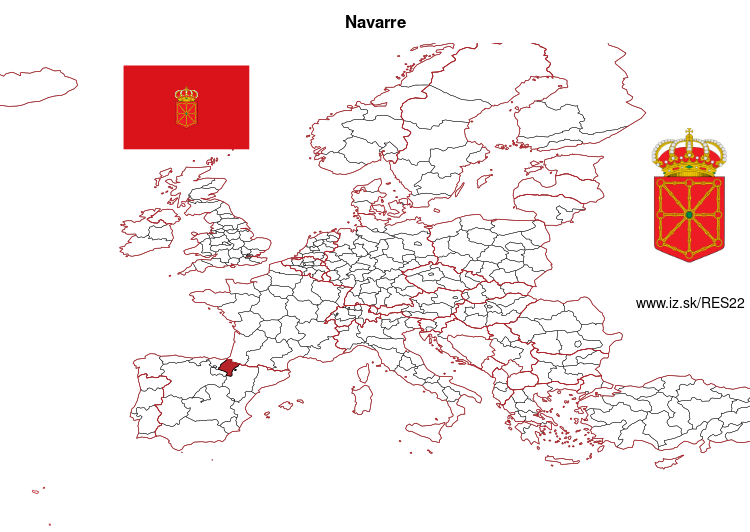
| Indicator | Period | Value |
|---|---|---|
| Life long learning | ||
| life long learning participation | 2024 | 18.2 |
| Part time jobs and flexible employment | ||
| percentage of part time workers | 2024 | 12 |
| percentage of part time workers, men | 2024 | 4.4 |
| percentage of part time workers, women | 2024 | 20.49 |
| Gender differences | ||
| gender gap in employment rate | 2024 | 90.05 |
| gender gap in unemployment rate | 2024 | 120 |
| Graduates and young people | ||
| unemployment rate of youth with elementary education | 2024 | 28.2 |
| NEET | 2024 | 8.1 |
| Gross domestic product | ||
| GDP per capita in PPS of EU average | 2023 | 108 |
| Employment | ||
| employment rate | 2024 | 69.8 |
| Social exclusion | ||
| people at risk of poverty or social exclusion | 2020 | 12 |
Navarre slovensky: ES22
Subregions: province of Navarra
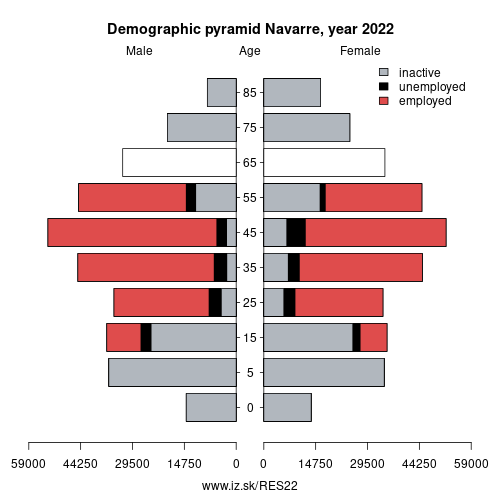
Unemployment
| Indicator | Period | Value |
|---|---|---|
| Unemployment | ||
| unemployment rate | 2024 | 7.7 |
| youth unemployment rate | 2024 | 22.9 |
| Long term unemployment | ||
| long term unemployment | 2024 | 2.1 |
| share of long term unemployed | 2024 | 27.7 |
Demographics
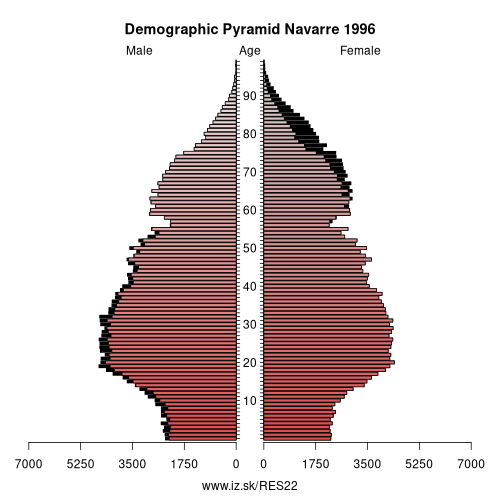
| Indicator | Period | Value |
|---|---|---|
| Demographics | ||
| number of inhabitants | 2024 | 678 333 |
| population density | 2023 | 65.3 |
| old-age dependency ratio | 2024 | 31.9 |
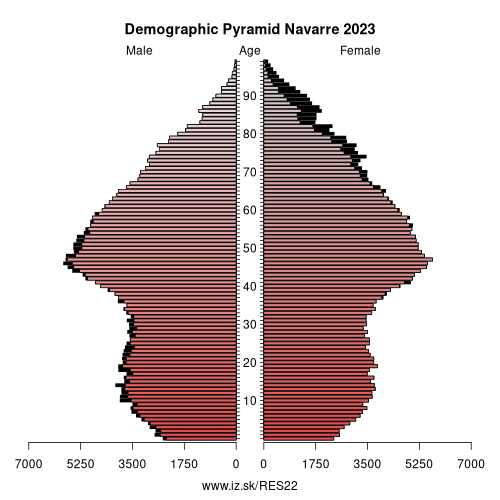
Employment by sectors, Navarre
| NACE r2 | % | NACE r2 | % | ||
|---|---|---|---|---|---|
| A | 10 | 3% | B-E | 83.7 | 27% |
| F | 16.4 | 5% | G-I | 69.1 | 22% |
| J | 7.3 | 2% | K | 4.2 | 1% |
| M_N | 25.1 | 8% | O-Q | 76.6 | 25% |
| R-U | 19.8 | 6% | TOTAL | 312.5 | 100% |
Data for the period year 2024. Source of the data is Eurostat, table [lfst_r_lfe2en2].
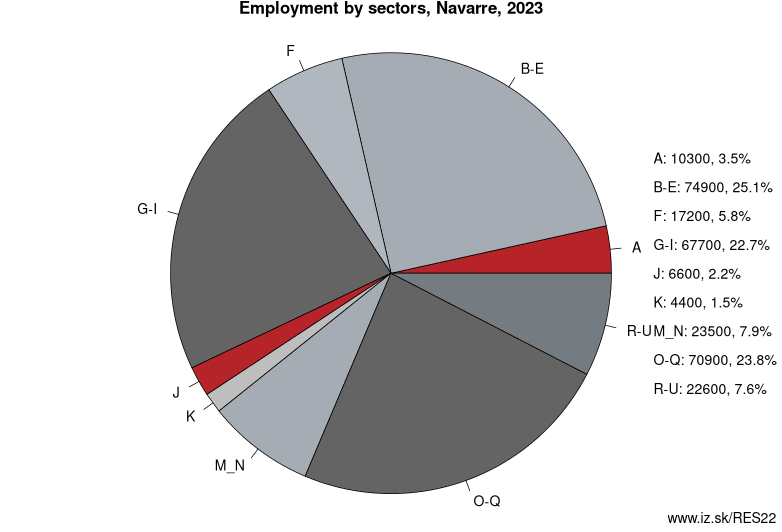
From Wikipedia : Navarre (English: ; Spanish: Navarra [naˈβara]; Basque: Nafarroa [nafaro.a]), officially the Chartered Community of Navarre (Spanish: Comunidad Foral de Navarra [komuniˈðað foˈɾal de naˈβara]; Basque: Nafarroako Foru Komunitatea [nafaro.ako foɾu komunitate.a]), is a landlocked foral autonomous community and province in northern Spain, bordering the Basque Autonomous Community, La Rioja, and Aragon in Spain and Nouvelle-Aquitaine in France. The capital city is Pamplona (Basque: Iruña). The present-day province makes up the majority of the territory of the medieval Kingdom of Navarre, a long-standing Pyrenean kingdom that occupied lands on both sides of the western Pyrenees, with its northernmost part, Lower Navarre, located in the southwest corner of France.
Navarre is in the transition zone between Green Spain and semi-arid interior areas, and thus its landscapes vary widely across the region. Being in a transition zone also produces a highly variable climate, with summers that are a mix of cooler spells and heat waves, and winters that are mild for the latitude. Navarre is one of the historic Basque districts: its Basque features are conspicuous in the north, but virtually absent on the southern fringes. The best-known event in Navarre is the annual festival of San Fermín held in Pamplona in July.
Toponymy
The first documented use of a name resembling Navarra, Nafarroa, or Naparroa is a reference to navarros, in Eginhard's early-9th-century chronicle of the feats of the Holy Roman Emperor Charlemagne, describing his intrusion to the Ebro river. Other Royal Frankish Annals feature nabarros. There are two proposed etymologies for the name.
- Basque nabar (declined absolute singular nabarra): „brownish“, „multicolour" (i.
Other: Noreste, Navarre, La Rioja, Aragon, Basque Autonomous Community
Neighbours: La Rioja, Aquitaine, Aragon, Basque Autonomous Community
Subregions: province of Navarra
Suggested citation: Michal Páleník: Europe and its regions in numbers - Navarre – ES22, IZ Bratislava, retrieved from: https://www.iz.sk/PES22, ISBN: 978-80-970204-9-1, DOI:10.5281/zenodo.10200164

 Share
Share Facebook
Facebook Twitter
Twitter News
News